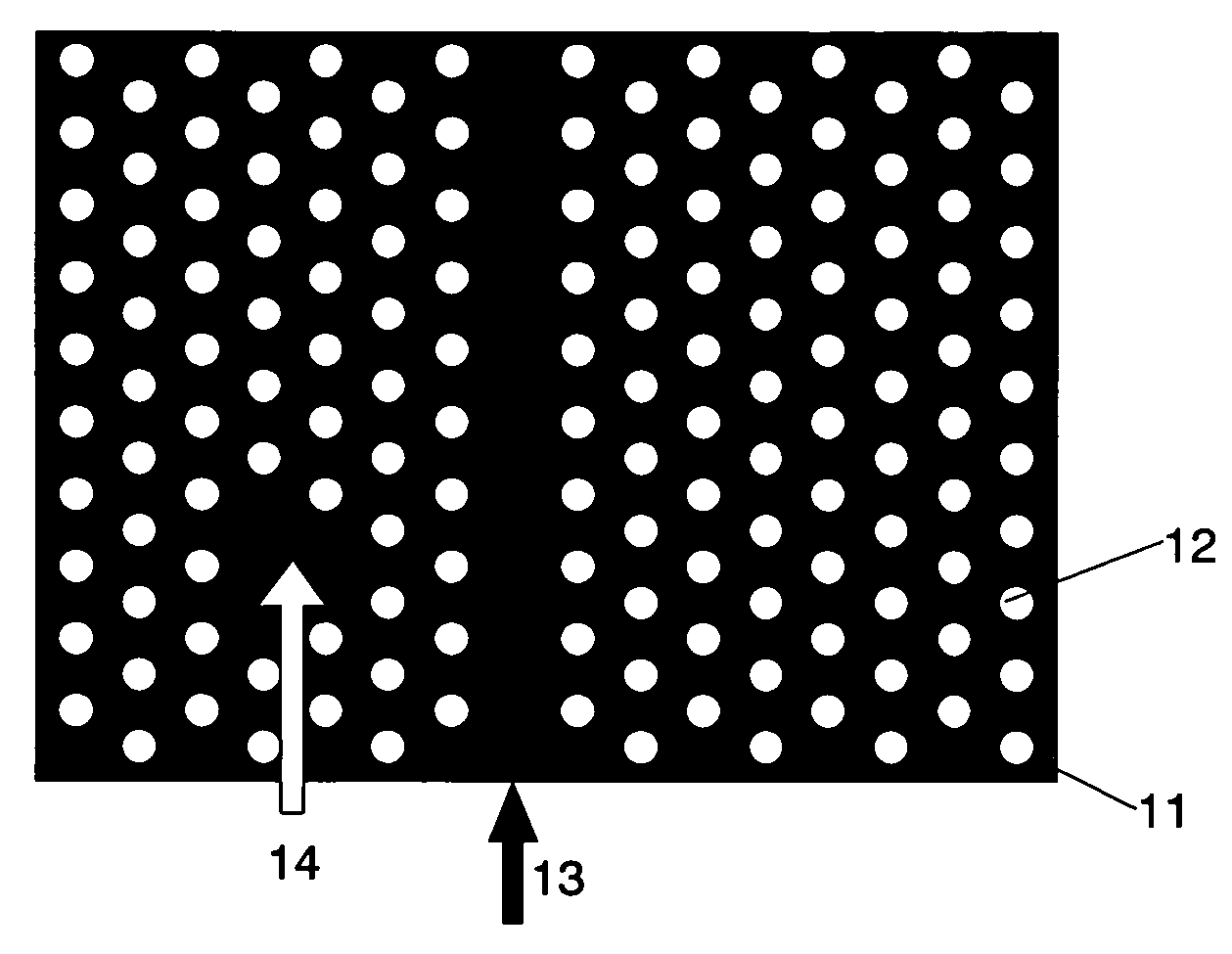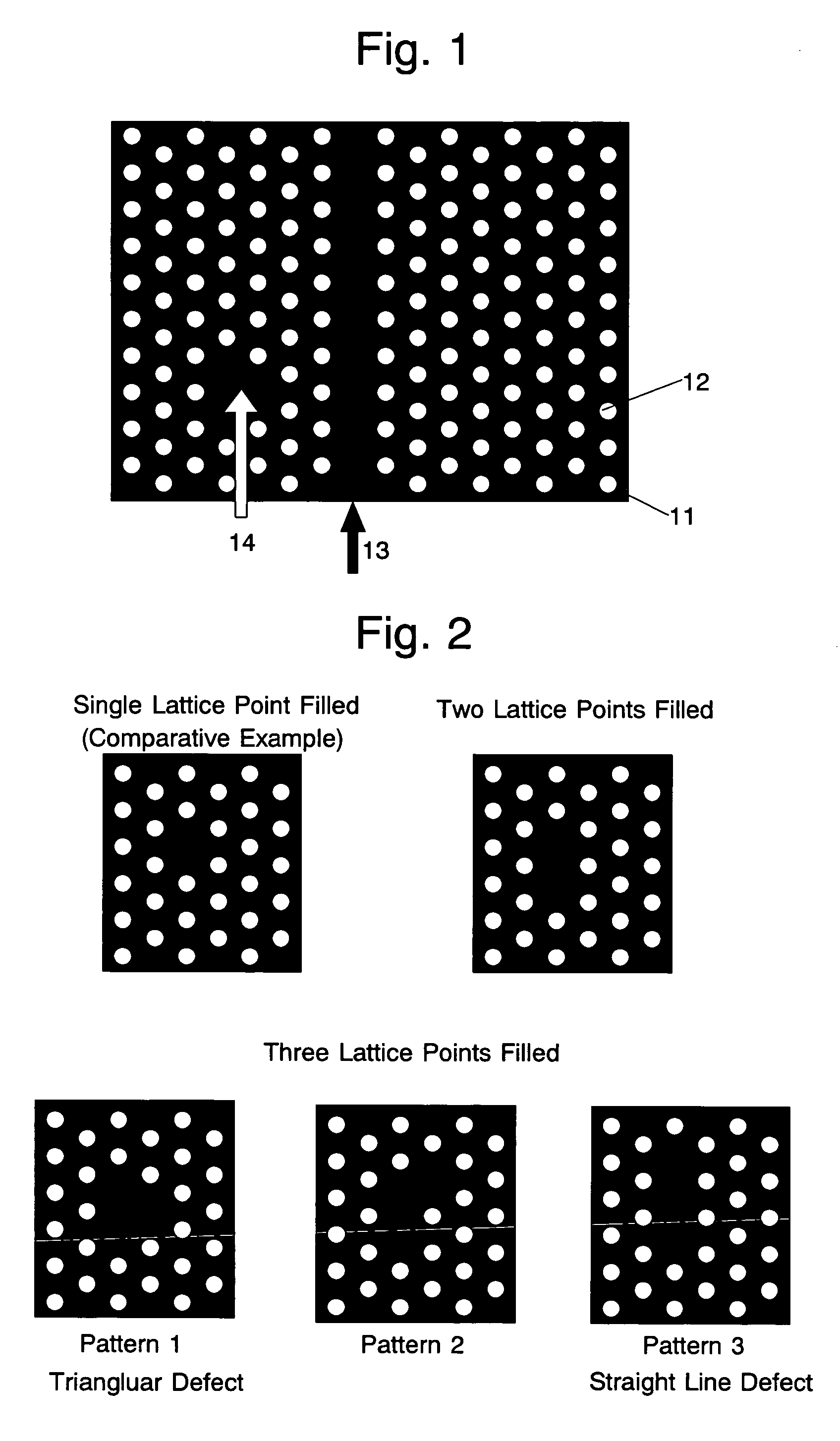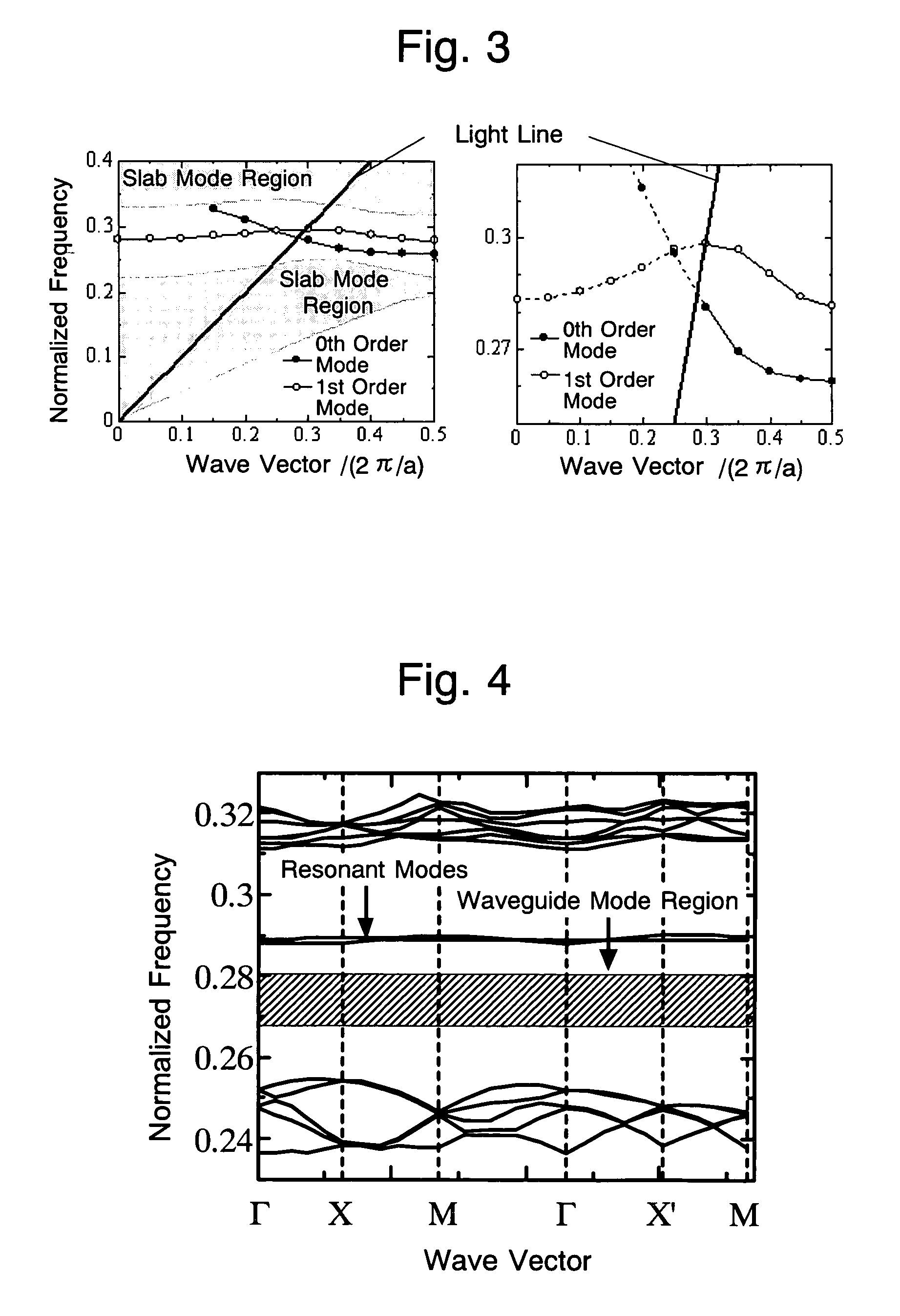Two-dimensional photonic crystal optical multiplexer/demultiplexer
a two-dimensional, photonic crystal technology, applied in the direction of optical waveguide light guide, instruments, nanotechnology, etc., can solve the problems the photonic band gap, and the inability to propagate light, so as to increase the degree of freedom, decrease the q-factor, and the effect of reducing the q-factor
- Summary
- Abstract
- Description
- Claims
- Application Information
AI Technical Summary
Benefits of technology
Problems solved by technology
Method used
Image
Examples
Embodiment Construction
(1) Embodiment of the First Mode
(1-1) Construction
[0065]As an embodiment of the first mode of the present invention, a two-dimensional photonic crystal as schematically illustrated in FIG. 1 is described. The plate shown in FIG. 1 is a slab (or body) 11. For infrared light having a wavelength λ=1.55 μm used in normal optical communications, the slab 11 may be made from InGaAsP, which is transparent to that wavelength of infrared light. The slab 11 has holes 12 periodically arranged as the modified refractive index areas (or low refractive index areas) as shown by the white circles. The holes 12 shown in FIG. 1 are arranged in a triangular lattice pattern, which may be arranged in various patterns, such as a square lattice pattern.
[0066]Waveguide 13 is formed by not boring holes along a linear zone indicated by the solid arrow in FIG. 1. A donor type cluster defect 14 is formed by not boring holes at plural lattice points within the area indicated by the white arrow. In the following...
PUM
| Property | Measurement | Unit |
|---|---|---|
| wavelength resolution | aaaaa | aaaaa |
| wavelength resolution | aaaaa | aaaaa |
| wavelength resolution | aaaaa | aaaaa |
Abstract
Description
Claims
Application Information
 Login to View More
Login to View More - R&D
- Intellectual Property
- Life Sciences
- Materials
- Tech Scout
- Unparalleled Data Quality
- Higher Quality Content
- 60% Fewer Hallucinations
Browse by: Latest US Patents, China's latest patents, Technical Efficacy Thesaurus, Application Domain, Technology Topic, Popular Technical Reports.
© 2025 PatSnap. All rights reserved.Legal|Privacy policy|Modern Slavery Act Transparency Statement|Sitemap|About US| Contact US: help@patsnap.com



